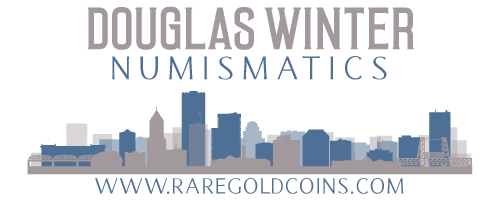The Proof 1878 Quarter Eagle
/When viewing mintage figures, most numismatists exclaim that a coin is “rare” because only 10,000 or so were produced. But this figure seems almost laughable in comparison to the mintages for Proof gold coins struck prior to 1900. In fact, many of these issues have mintages that were lower than 100 coins. Proof gold was struck for collectors every year from 1858 until 1915. From the 1850’s until the early 1880’s, mintages were incredibly low. In fact, a few issues have mintages as low as twenty coins. A number of these issues are well-known and highly prized by collectors but a few have fallen through the cracks and their true rarity remains unknown even today. One of these overlooked issues is the Proof 1878 quarter eagle.
I recently sold an NGC PR65 Ultra Cameo example of this rarity to an Eastern collector. In searching through my records I realized that this was the first Proof 1878 quarter eagle that I have handled. And the more I studied this issue, the more I realized just how rare it truly is.

With an original production figure of only 20 Proofs, the 1878 is tied with three other issues (1874, 1875 and 1877) as the lowest mintage Proof date of this denomination from 1859 onwards. The rarity of this was known by numismatists as early as the 1910’s/1920’s. As recently as 1975, David Akers wrote the following about this date:
“Proofs are extremely rare and the 1878 is, in fact, the rarest post-1859 quarter eagle in Proof. At least I know of fewer examples of this date than of any other Proof after 1859. I would estimate that only a half dozen or so remain in unimpaired condition, most of which are impounded in museums or prominent collections.”
Despite this praise from Akers, the rarity of the 1878 seems to have been forgotten by this generation of collectors and other Proofs of this type, namely the 1875, are more highly regarded.
As a rule, Proof gold of this era has a survival rate of approximately half of the original mintage. This typically holds true in the quarter eagle series but the 1878 appears to be an exception. Akers believed that some of the 1878 Proof gold coinage may have been melted after it went unsold and given the extreme rarity of all Proof gold denominations from this year, I feel that this may well be correct.
Unfortunately, the population reports for Proof 1878 quarter eagles include a number of resubmissions and this has further obfuscated the true rarity of this issue. PCGS has graded three: one example each in PR64, PR64 Deep Cameo and PR65 Deep Cameo. NGC shows ten submissions but I can all but guarantee you this number is severely inflated. These include one each in PR63, PR64 and PR65 plus four (!) in PR64 Ultra Cameo and three in PR65 Ultra Cameo.
In the last decade or so, I am aware of only two distinct examples of this date being available for sale at public auction. The most recent of these was a PCGS PR65 that was offered as Superior 8/06: 639. It brought $32,570.
My best estimate is that there are seven or eight examples known. This includes at least two that are impounded (ANS and Smithsonian). Breen wrote that “at least three” are impaired but I have never seen or heard of one of these.
As someone who has specialized in rare United States gold for over two decades, it isn’t often that I handle a coin that is so rare that it causes me to write a blog about it. But this was clearly the case with the Proof 1878 quarter eagle that I just sold. It was an exciting piece for me to handle and I greatly appreciate being able to buy and sell it.










